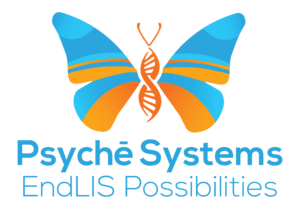In today’s fast-paced world of scientific research and healthcare, laboratories play a crucial role in generating accurate results and advancing our understanding of the world. However, the ever-increasing demands on laboratory resources and the need for cost-cutting measures has compelled scientists and lab managers to explore innovative solutions to streamline their operations. Enter the medical laboratory software.
Also known as Laboratory Information System (LIS), a robust healthcare software solution used by laboratory facilities to process, store and manage basic patient data such as patient names, test results and the date of the lab visit. In this article, we will explore how an LIS can maximize efficiency and save time and money.
4 Ways an LIS Can Deliver Cost and Time Savings
Streamlined Workflow
An LIS automates and streamlines various laboratory processes, such as sample tracking, result entry, and report generation. Traditionally, sample tracking involved manual recording, labeling, and tracking of samples throughout the laboratory.
This manual process was prone to errors, such as mislabeling or misplacement of samples, leading to delays and duplications of effort. With an LIS, barcoding and RFID technology can be implemented to track samples accurately and efficiently. Each sample is assigned a unique identifier that can be scanned and recorded at various stages, ensuring proper tracking and reducing the chances of errors.
Generating reports manually can be time-consuming, especially in laboratories dealing with a high volume of tests. An LIS automates the report generation process by pulling data from the system and generating comprehensive reports with minimal manual intervention.
Eliminating manual data entry and reducing paperwork can significantly reduce the chances of errors. Automation also speeds up the overall workflow. This streamlined process saves valuable time and minimizes the need for retesting or redoing tasks, ultimately improving productivity and reducing costs.
Enhanced Data Management
With an LIS, laboratory data is captured electronically, eliminating the need for manual data entry on paper forms or logbooks. Digital captures ensure data integrity and reduce the risk of errors during manual transcription.
Laboratory instruments can be directly connected to the LIS, allowing for the automatic transfer of test results without a need for manual data entry. An LIS provides a centralized platform for organizing and storing laboratory data.
The LIS can categorize data based on parameters such as patient information, test types, dates, or sample identifiers. This organized data structure enables quick and efficient data retrieval when needed. An LIS simplifies data retrieval by providing powerful search functionalities and filters.
Users can search for data based on specific criteria, such as patient ID, test type, or date range, significantly reducing the time spent locating relevant information. An LIS also incorporates robust security measures, such as user authentication, data encryption, and access controls, ensuring that sensitive information remains protected.
Inventory Management
An LIS can integrate with inventory management systems, ensuring optimal utilization of laboratory resources. By implementing barcode or RFID technology, each item can be assigned a unique identifier that can be scanned and recorded in the system.
This allows laboratory staff to have up-to-date information on the availability, location, and status of inventory items, eliminating the guesswork and manual effort required for inventory management. This is yet another way using an LIS can save time, and reduce errors.
With real-time inventory tracking, an LIS can alert laboratory staff when inventory levels fall below a predefined threshold. This proactive approach helps prevent stock-outs, ensuring that essential resources are always available when needed.
By avoiding delays caused by insufficient inventory, laboratory operations can continue smoothly, reducing downtime and improving overall efficiency. Additionally, an LIS can provide insights into inventory usage patterns, allowing for optimized purchasing decisions and reducing wastage by ensuring that resources are used efficiently.
An LIS with inventory management capabilities enables laboratories to accurately track costs associated with inventory items. The system can record pertinent information such as purchase prices, consumption rates, and usage history.
This data can be used to generate reports and analytics that provide insights into cost trends, identify areas of high expenditure, and facilitate budget planning. By having a clear understanding of costs and implementing cost control measures, laboratories can optimize their inventory management strategies, reduce unnecessary expenses, and achieve significant cost savings.
An LIS can also assist in managing equipment maintenance and calibration schedules. It can store equipment information, maintenance records, and calibration history, triggering automated reminders for routine maintenance tasks or calibration checks. By proactively managing equipment maintenance, laboratories can minimize equipment downtime, avoid costly repairs, and ensure the accuracy and reliability of test results.
Quality control and compliance
Compliance with regulatory standards and accreditation requirements is crucial for laboratories to operate effectively and maintain credibility. An LIS can be designed to align with specific regulatory guidelines and standards. Features such as data integrity controls, user access management, audit trails, and documentation management, help laboratories avoid penalties, meet compliance and regulatory requirements, and maintain the trust of stakeholders.
An LIS can also automate various quality control processes, such as instrument calibration, internal quality control (IQC), and external quality assessment (EQA). This feature allows for the creation of predefined QC protocols, specifying the frequency and parameters for calibration and QC checks.
The system can generate automated reminders for performing QC activities and record the results electronically. By automating these processes, an LIS reduces the chances of human error, enhances accuracy, and ensures adherence to standardized quality control protocols.
Conclusion
The LIS empowers laboratories to make data-driven decisions, improve workflow efficiency, reduce errors, and drive continuous improvement initiatives. By harnessing the power of technology, laboratories can achieve significant time and cost savings, enhance operational effectiveness, and deliver high-quality results.
Whether you’re a startup or an established facility, Psyche Systems is your one-stop shop for all your lab needs. We offer affordable lab software solutions to help you optimize your lab’s capabilities, provide better patient care, and increase profit margins. Contact us today to schedule a demo.

